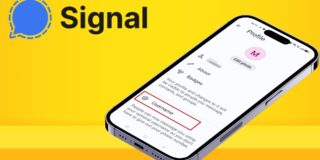5 Tips To Decrease Hand and Wrist Fatigue From Computer Use
Usually when one wants to decrease hand and wrist pain from computer use, they buy ergonomically friendly input hardware, such as a Microsoft Natural Keyboard. This is good, but you can take it a step further by following the old adage of, “type less, click less”. Here are five ways to do that:
1. Assign the mouse wheel button as a double-click.
I learned how to do this 10+ years ago and have always done it since then because it saves massive amounts of clicking. I can close windows from the left with one click, open desktop items with one click, and anything else in the system that needs a double-click only needs one tap of the mouse wheel to do it. On a laptop I set holding the left and right bottom corners at the same time as a double-click, which is sorta/kinda the same thing.
In order to set the mouse wheel button as a double-click, you must use the control software provided by the mouse manufacturer. If using a Microsoft or Logitech mouse, this software is easy to get and conveniently adds itself into the “Mouse” setting in the Control Panel. For Microsoft mice go here, and for Logitech just go to www.logitech.com, hover over Support, then Product Support, then just punch in the model # of your mouse (flip it over to see it) to get to the control software you need.
2. Assign keyboard shortcuts to your favorite web sites.
Using keyboard shortcuts is always faster than using the mouse and requires less movement.
Unfortunately for IE users, using keyboard shortcuts isn’t possible for Favorites. “But wait! IE can have a shortcut key assigned to a favorite!” True, but it doesn’t always work. This is yet another reason why IE is just plain crappy.
If you’re fortunate enough to use Firefox or Opera however, you can assign keyboard shortcuts to bookmarks easily, and they always work.
Firefox way: Go to pcmech.com and hit CTRL+D. Before you hit the Done button, add in some tags like this:
![image[21] image[21]](https://www.techjunkie.com/wp-content/uploads/2010/04/image21.png)
When you type pc or mech in the address bar and press Enter, you’ll be taken to pcmech.com instantly.
Opera way: You can use the built-in speed dial feature. If you assign pcmech.com to speed dial 1, the keyboard shortcut to get there is CTRL+1. You can also use a “nickname” which is very similar to Firefox’s tags feature. Go to pcmech.com, press CTRL+D, and set the nickname as pc, so when you type pc in the address bar, pcmech.com loads up.
3. If it’s a dot-com, just punch in the name and CTRL+Enter to go there.
There is no need to type http://, www or the .com in a dot-com web address. If you wanted to go to http://www.techjunkie.com, just go to the address bar, type pcmech and press CTRL+Enter. Everything will be filled in automatically and you’ll go straight to the site.
4. Memorize and use common browser navigation keystroke shortcuts.
Here’s a few:
- ALT+Left arrow: Back one page
- ALT+Right arrow: Forward one page
- ALT+HOME: Load home page
- CTRL+T: New tab
- CTRL+TAB: Cycle through open tabs (varies depending on browser)
- CTRL+W: Close current tab
At bare minimum, try to use ALT+Left and ALT+Right for back and forward. This saves you from lifting your wrist and going for the mouse just to go back or forward a page and also saves a click.
5. Assign common searches to keyletters/keywords.
This is the one on the list that’s the most useful, and the one that saves the most typing and clicks all in one shot.
To search using the default search provider (usually Google) in the secondary search bar, it only requires a two-key keystroke. In IE, Firefox or Opera it’s CTRL+E. Hit that keystroke, type your search term, press Enter, done deal.
The only problem here is that this only works for whatever search provider you’re using in the search bar at the time.
Solution: Use keyletters or keywords followed by the search term.
(This will only work in Firefox or Opera. Sorry, IE users.)
Let’s say you wanted to have the keyletter D assigned as a dictionary search.
- Go to dictionary.reference.com
- Right-click inside the big search field
- [Firefox] Click Add a Keyword for this Search…, enter the keyword as d, click Save.
- [Opera] Click Create Search, enter the keyword as d, click OK.
Now whenever you want to define a word in the online dictionary, go to the address bar, type “d [word here]”, such as “d computer”.
This can be done for any web site that has a search field. Use it for Wikipedia, use it for Yahoo!, use it for International Arcade Museum, whatever!

















3 thoughts on “5 Tips To Decrease Hand and Wrist Fatigue From Computer Use”
One of the best things to do is simple exercises throughout the day, just a minute or two, but it’ll help from letting your wrist and arms get all tired.